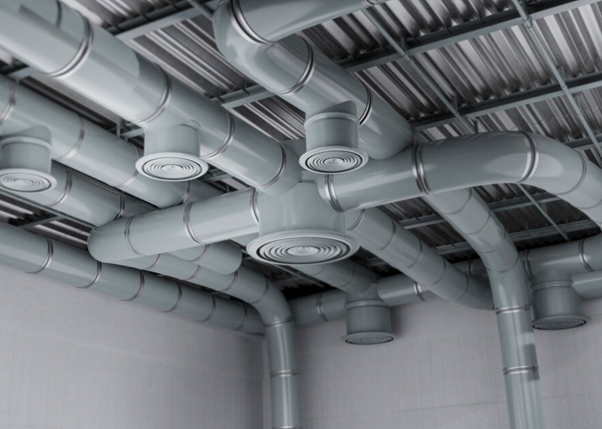
Indoor air quality (IAQ) plays a crucial role in maintaining a healthy living environment, yet it’s often overlooked by homeowners. Pollutants like dust, pet dander, and mold can circulate throughout your home, impacting the air you breathe. One of the most effective ways to tackle these pollutants is through regular air duct cleaning. By ensuring your air ducts are free from debris, you not only improve IAQ but also enhance your HVAC system’s efficiency and lifespan.
This guide covers everything you need to know about air duct cleaning—its benefits, how it works, and why it’s an essential aspect of home maintenance.
What Is Air Duct Cleaning?
Air duct cleaning involves the removal of dust, dirt, and other contaminants from your HVAC system’s ductwork. Over time, air ducts can accumulate significant amounts of debris, which can be recirculated into your living spaces. Regularly cleaning the ductwork helps minimize the distribution of harmful pollutants, leading to cleaner indoor air.
While it’s not necessary to clean air ducts as often as you would other household fixtures, periodic cleaning—every 3 to 5 years—is recommended, especially if you have pets, allergies, or a recent history of home renovation. Some professional cleaning services also offer air duct inspections to determine whether your system requires a thorough cleaning.
Why Air Duct Cleaning Matters for Indoor Air Quality
One of the primary reasons to invest in air duct cleaning is to improve indoor air quality. Dirty air ducts can harbor allergens, bacteria, and even mold, all of which can worsen respiratory conditions like asthma or allergies. If you’ve noticed an increase in dust on surfaces, unpleasant odors, or difficulty breathing indoors, these could be signs that your air ducts need attention.
Here’s how clean air ducts contribute to better indoor air quality:
- Reduction of Dust and Allergens: Dust, pollen, and other airborne particles get trapped in ductwork and are distributed every time your HVAC system runs. Cleaning the ducts reduces these allergens, ensuring cleaner air.
- Elimination of Odors: Pets, household cleaning agents, mold, and even food preparation can lead to lingering odors in air ducts. Regular cleaning helps remove these unpleasant smells, resulting in fresher air.
- Prevention of Mold Growth: Moisture in ducts creates a breeding ground for mold and mildew. Mold spores can spread through the air, exacerbating health issues. Air duct cleaning helps eliminate moisture buildup and prevents mold from spreading.
- Improved HVAC Efficiency: A buildup of debris in your air ducts can cause your HVAC system to work harder to distribute air. Cleaning the ducts allows for better airflow, improving the overall efficiency of your system and lowering energy costs.
Signs That Your Air Ducts Need Cleaning
Although air duct cleaning may not be required frequently, certain signs indicate it’s time to schedule a professional cleaning:
- Dust Buildup: Excessive dust on your furniture, walls, or floors may indicate your ducts are distributing dust throughout the home.
- Increased Allergy Symptoms: If household members are experiencing worsened allergy symptoms, the problem could be airborne irritants circulating through dirty ducts.
- Mold in or Around Ducts: Visible mold around vents or an increase in musty odors is a red flag for immediate air duct cleaning.
- Uneven Airflow: Inconsistent airflow between rooms could signal a blockage in your duct system.
- High Energy Bills: An unexpected increase in energy bills may indicate your HVAC system is working harder due to clogged air ducts.
The Air Duct Cleaning Process
Understanding the air duct cleaning process can help you make informed decisions when hiring a professional service. Here’s a basic rundown of what you can expect during an air duct cleaning appointment:
- Inspection: Technicians will inspect your air ducts and HVAC system for buildup, blockages, and potential leaks. This inspection helps determine the scope of cleaning needed.
- Vacuuming: Specialized vacuum equipment is used to suck up debris, dust, and contaminants from the ductwork. Professionals use high-efficiency particulate air (HEPA) vacuums to ensure pollutants don’t get released back into the air.
- Brush and Air Tools: Rotating brushes or compressed air tools are employed to loosen stubborn dirt and particles from the duct surfaces.
- Cleaning Registers and Vents: Registers and vents are also cleaned to remove dust, dirt, and debris. Some services offer to sanitize these components, ensuring further cleanliness.
- Sealing and Reassembly: After cleaning, the technician will reseal any openings or access points and ensure the system is working efficiently.
DIY vs. Professional Air Duct Cleaning
While some homeowners attempt to clean their air ducts themselves, professional air duct cleaning offers several advantages. Professional services use specialized tools and equipment that can reach deep into the ductwork and remove contaminants more effectively than household vacuums.
Additionally, professionals are trained to spot potential issues such as mold growth, leaks, or rodent infestations that may otherwise go unnoticed. Considering the importance of maintaining healthy air quality, hiring a professional ensures the job is done thoroughly and safely.
How to Maintain Clean Air Ducts
After having your air ducts cleaned, there are steps you can take to maintain their cleanliness and ensure optimal indoor air quality:
- Replace Air Filters Regularly: Dirty air filters contribute to dust buildup. Replacing them every 2 to 3 months will help prevent dirt and dust from clogging your ducts.
- Vacuum Regularly: Keeping your home clean and free of dust and dirt can minimize the amount of debris that enters your duct system.
- Control Humidity: Keeping indoor humidity levels below 50% helps reduce the risk of mold growth in your air ducts.
Conclusion
Air duct cleaning is an essential part of maintaining a healthy and comfortable home. By investing in professional air duct cleaning, you’ll improve indoor air quality, enhance your HVAC system’s performance, and reduce energy costs. Whether you’re concerned about allergens, mold, or simply want a fresher-smelling home, regular air duct maintenance should be a top priority in your home care routine.
